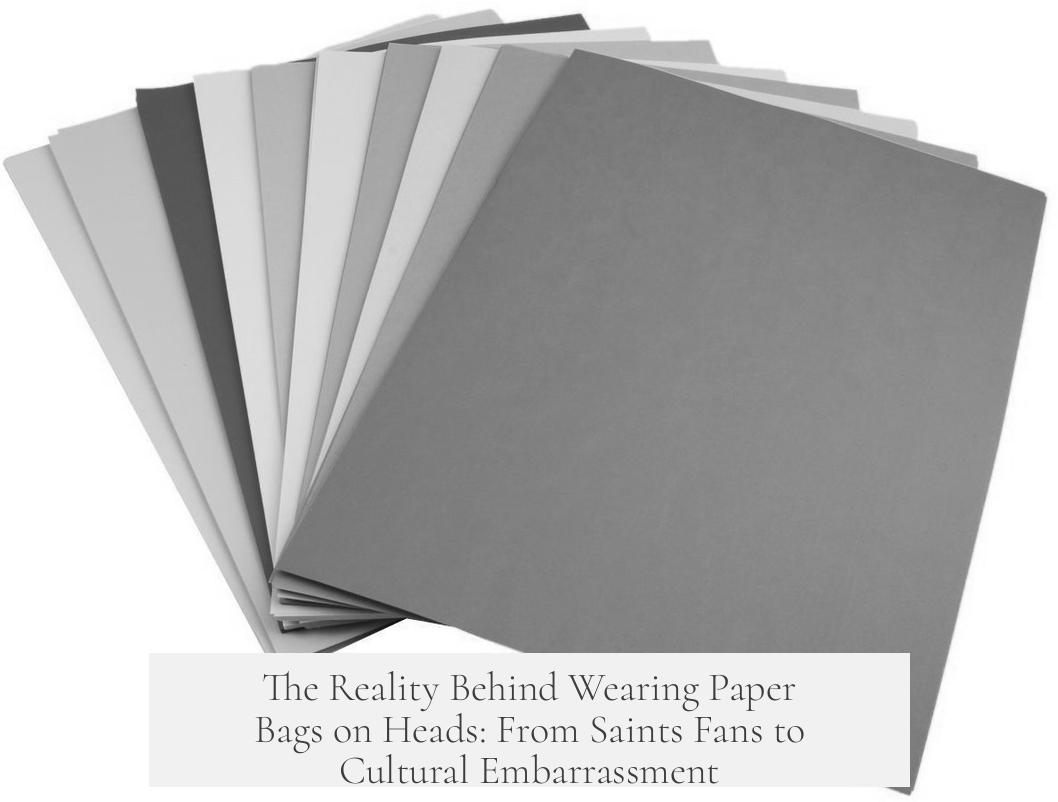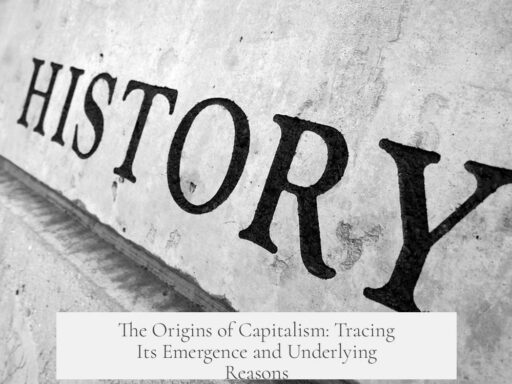People have indeed worn paper bags on their heads out of embarrassment, especially in sports settings. This practice is not merely a trope but originated as a genuine form of fan protest and self-mockery when teams performed poorly.
The trend began prominently with the 1980 New Orleans Saints. Fans, frustrated by the team’s losing record that season, wore paper bags to games to express their embarrassment. This behavior stemmed partly from inspiration drawn from a performer known as The Unknown Comic on the television program The Gong Show. The Unknown Comic famously concealed his identity with a plain paper bag over his head during performances. Buddy Diliberto, a local sports broadcaster and commentator in New Orleans, adapted this idea by encouraging Saints fans to wear bags marked “Aints,” mocking the team’s lackluster play. His involvement helped popularize the practice in the 1980 NFL season and beyond.
Evidence shows this was more than a one-time stunt. Specialized paper bags were made specifically for Saints fans. These bags, produced by Robert LeCompte, featured black and gold colors matching the team’s palette and often displayed the team’s poor record, such as “0-9,” during the season. Newspapers at the time, like The Town Talk, noted fans were wearing black paper bags to avoid embarrassment when their faces appeared on national TV during games. Even as the Saints finished the season with a harsh 1-15 record, paper bag usage remained a visible symbol of their struggles.
| Year | Team | Context | Paper Bag Use |
|---|---|---|---|
| 1980 | New Orleans Saints | Extremely poor NFL season; fans embarrassed | Widespread, bags with ‘Aints’ and record emblazoned |
| 1981 | New Jersey Nets | NBA fan protest during bad season | Fans wore bags reading “Give us a break!” |
| 1983 | Houston Oilers | Fans wore bags through losing streak; removed them upon victory | Used as protest and embarrassment symbol |
| 1985 | Phoenix Suns | Poor NBA team performance | Fans wore paper bags at games |
The paper bag gesture spread beyond the Saints. The Houston Oilers experienced a similar moment in 1983 when fans wore bags during a losing streak and took them off after the team finally won. In the NBA, Phoenix Suns fans wore bags in the mid-1980s, reflecting discontent with their team’s poor play. Even earlier, in 1981, New Jersey Nets fans were documented wearing bags with slogans such as “Give us a break!” mirroring the Saints fans’ “Aints” bags. These instances showcase a broader sports fan culture where paper bags symbolize shared frustration.
Over time, wearing paper bags has evolved into a tradition among certain teams, especially the Saints. It resurfaces during difficult seasons as a form of collective expression. For example, during another poor NFL campaign in 1996, Saints fans again appeared with paper bags on their heads, as documented by media reports. The bags have thus become part of the team’s cultural identity, blending humor and embarrassment.
While initially a spontaneous act, the phenomenon of wearing paper bags embodies fans’ feelings of shame and solidarity. It serves as a public acknowledgment of disappointment, criticism of team performance, and a distinctive way for fans to visually communicate their desire for change. The act has transcended mere spectacle and become a recognized symbol within sports culture.
- Wearing paper bags to hide faces originated as a real fan protest, not a fictional trope.
- The 1980 New Orleans Saints are notably credited with popularizing the trend in professional sports.
- Specialized paper bags with team-related slogans and colors were produced for fans.
- The practice extended to other teams, including Houston Oilers, Phoenix Suns, and New Jersey Nets.
- The bags remain a cultural tradition for some fan bases during poor seasons.
Did People Ever Actually Wear Paper Bags on Their Heads Out of Embarrassment, or Is That Just a Trope?

Yes, people really did wear paper bags on their heads out of embarrassment, especially at sports events where their teams performed terribly. This was not just a silly trope made up for sitcoms and cartoons; it has genuine roots in sports fan culture, starting notably with the 1980 New Orleans Saints. Over time, the paper bag phenomenon spread, becoming a symbol of collective frustration and dark humor among fans.
Ever wonder if those images on TV of fans sporting paper bags at football games were just a lazy stereotype, or if actual humans really hid their faces that way? Spoiler alert: they did. Let’s dive into how this curious tradition began and why it stuck around.
Where It All Began: The 1980 New Orleans Saints and the Paper Bag Origin Story
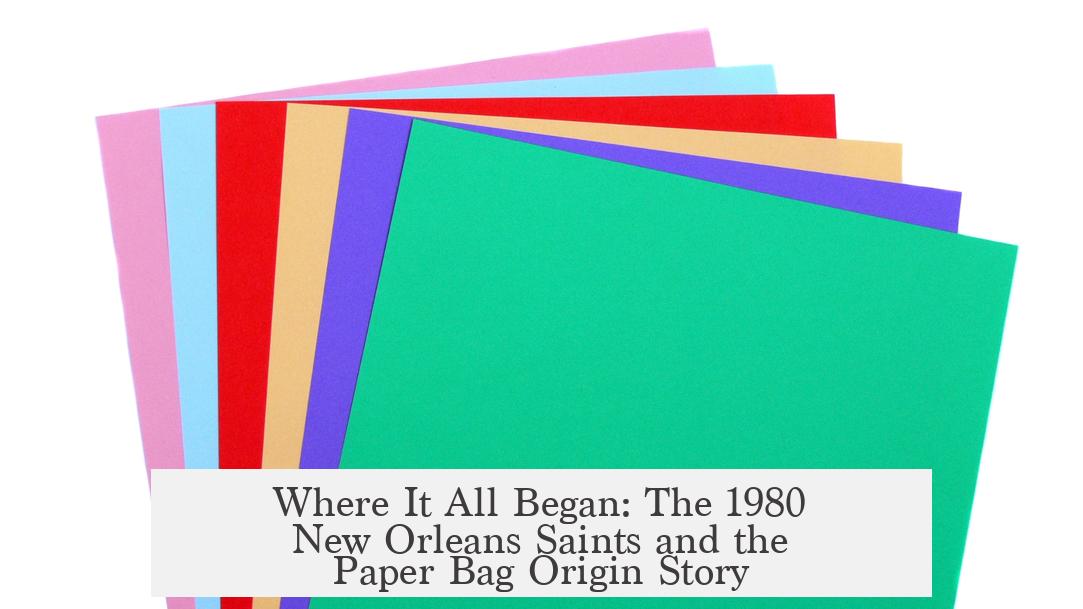
In professional football, the notorious practice of donning paper bags likely began with the 1980 New Orleans Saints. Imagine this: a team struggling so much that its own fans prefer anonymity over proudly showing their faces. The Saints endured a brutal season, finishing 1–15. How can a team lose that badly? Well, the fans felt the pain—and responded with humor.
The inspiration for this quirky tactic came not from the sports world itself, but from entertainment. A 2010 New York Times article tells us Buddy Diliberto, a local sports broadcaster, took the idea from a performer called The Unknown Comic. On The Gong Show, this contestant wore a plain paper bag over his head to conceal his identity. Diliberto adapted the idea, placing “Aints” on the bags—a cheeky nod poking fun at the Saints’ painful nickname at the time.
Diliberto’s role was pivotal. He actively encouraged Saints fans to pick up paper bags, and even as late as the 1981 NFL season, he was noted for egging on this paper-bagging fan culture. This wasn’t just a fleeting joke—it was a movement.
Proof That Fans Actually Wore Paper Bags
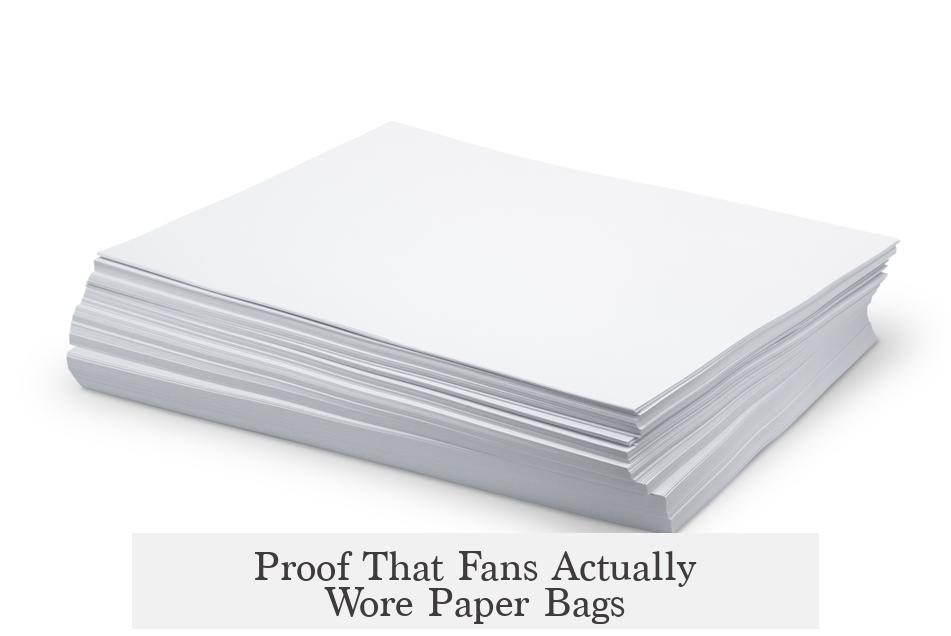
This wasn’t some underground phenomenon or urban legend. In November 1980, Robert LeCompte took the idea seriously enough to start producing specialized paper bags for Saints fans. These weren’t ordinary grocery store bags, mind you—they came in black and gold and proudly displayed the team’s dismal 0–9 record at the time.
Reports from newspapers like The Town Talk in Louisiana documented how on November 24, 1980, many fans planned to wear these black bags. The stated goal? Not to be embarrassed about showing their faces on national TV. When your team is that bad, even sports fans want to maintain a modicum of dignity.
Despite finishing their season almost winless, this bizarre form of fan protest stuck around in New Orleans. Over the years, the bags became part of Saints fan tradition, popping up in crowd photos during tough seasons.
The Paper Bag Craze Spreads to Other Teams and Sports

What began with Saints fans soon found new homes. The Houston Oilers fans also embraced the paper bag symbol by the early 1980s. It took a while, but after a long losing streak, these fans reached a cathartic moment on November 13, 1983, when their team finally won. Fun fact: they removed the bags immediately, revealing grins that no paper bag could ever hide.
Across the country, in the NBA, the Phoenix Suns had their own paper bag moments in December of 1985. Their fans showed up to games concealing their faces, visibly frustrated with the team’s poor performance.
Even earlier, in January 1981, New Jersey Nets fans were photographed wearing bags emblazoned with “Give us a break!”—a clear entendre packed with disdain and hope. The Nets fans went by “Nots,” matching the pun-filled spirit seen in New Orleans.
Why Did This Become Such a Thing? The Culture of Collective Embarrassment
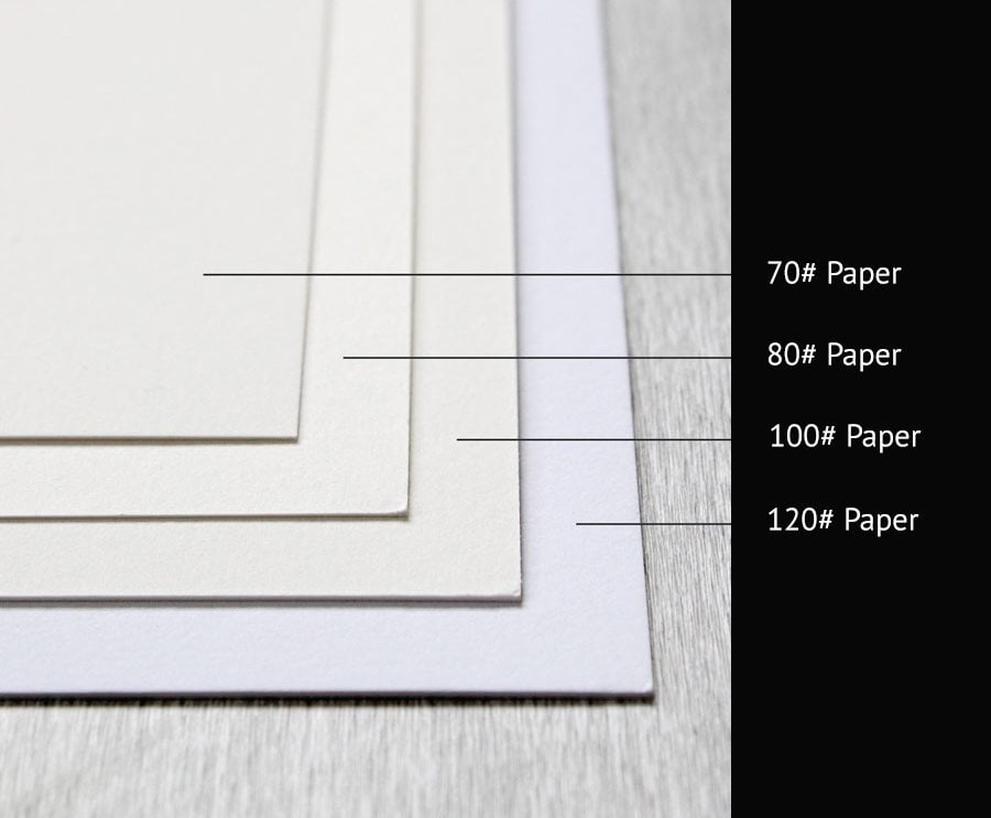
Why do people willingly hide behind paper bags? It’s a fascinating expression of shared frustration and humility. Paper bags became a sort of badge of honor for enduring pain together as fans. Instead of turning away from failure, they held it up, wore it, and mocked it.
Over time, the paper bag evolved from practical concealment to a symbol of sports fan culture. Even in 1996, when the Saints endured a dreadful 3–13 season, the paper bags returned. Think of it as a tradition for hard times—a communal nod to “we’re in this mess together, face covered or not.”
What Can We Learn From This Strange Tradition?

This oddity tells us a lot about how fans cope with disappointment. Wearing a paper bag isn’t just about hiding embarrassment; it is a collective catharsis. Instead of quietly suffering in the stands, fans say with humor and humility, “Yes, we see it too.” This ritual creates unity. It’s a built‐in way to handle defeat with grace and a dash of sass.
On a practical level, teams and stadium vendors even produced specialized bags, showing that this wasn’t a fleeting fad. It became an expected part of the fan experience in certain cities, almost like face paint or foam fingers, but with a much darker edge.
Does your favorite team ever have a season so grim that paper bags might come out? Maybe someday, you could bring one and join the crowd. After all, it’s a quirky piece of sports history and a lighthearted way to confront real emotions.
Final Thoughts: More Than a Trope
While movies and cartoons amplify the paper bag head trope as a comedic device, its roots are real and well-documented. Hundreds of fans at games, from Saints to Suns to Nets, genuinely donned paper bags to mask their shame, frustration, or irony. The paper bag is more than a prop—it’s a tradition, a statement, and a tool for fans to join forces in the face of adversity.
Next time you see someone in a paper bag at a game, you won’t wonder if it’s just a joke. You’ll appreciate the rich history behind that humble piece of paper and all the fans who lived it. Your sports pride may come and go, but the paper bag—now that’s legacy.

